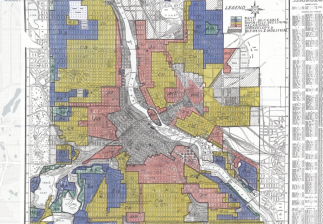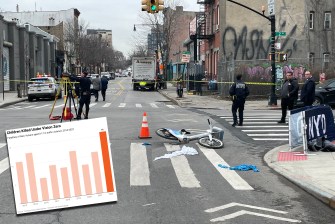Health Department: Pedestrian Fatality Rate Highest on Streets in Low-Income Neighborhoods
The analysis also shows that NYC streets are especially dangerous for seniors on foot.

Pedestrian fatalities in NYC are disproportionately concentrated on streets in high-poverty neighborhoods, according to a new Department of Health analysis of pedestrian fatality data from 2012 to 2014 [PDF].
The Health Department calculated the rate of pedestrian deaths per mile of street according to the share of residents living below the federal poverty line. Per mile, nearly three times as many pedestrian deaths happened in zip codes with more than 30 percent of residents living in poverty as in neighborhoods where fewer than 10 percent of residents are in poverty. In the two neighborhood tiers between those extremes — which together account for about two-thirds of the city’s population — the per-mile rate splits the difference.
Per capita, differences are still apparent but not quite as stark. The pedestrian fatality rate for residents of low-poverty zip codes is about half as high as in the other three neighborhood tiers, without much variation between those three.
The report does not explain possible causes for these disparities, nor does it map the areas with high or low rates of pedestrian deaths. But the results indicate that the city has work to do to eliminate the unequal burden of pedestrian fatalities. A 2012 report from Transportation Alternatives posited that elevated child pedestrian deaths in low-income Manhattan neighborhoods might be due to dangerous street design near public housing.

The Health Department also points out the increased risk for older pedestrians on NYC streets. New Yorkers over 65 accounted for 37 percent of all pedestrian fatalities during the study period but account for just 13 percent of the city’s population.
You can see how the dangers of traffic limit the freedom of both elderly New Yorkers and children. Residents younger than 18 and older than 64 both suffer significantly higher pedestrian fatality rates within 10 blocks of their homes than the population at large.


